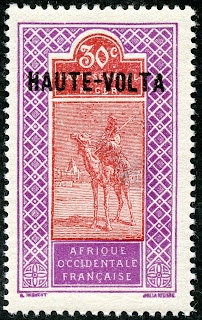Bud's Observations
Fascination
with 'roos and royals is required of Australia specialists. Add in kookaburras
and a koala, and they make up over fifty percent of BB’s spaces. Deep pockets help the specialists, too, as
many of the variations (watermarks, perfs, fly-specs) of these stamps cost
dearly. My Australia pages are of the more shallow-pocket sort.
Collecting
diligence does yield inexpensive SON cancels, however, often from very small
settlements. I sometimes get ideas for possible adventures with my
grandchildren by googling these places to see what we might do if we were, say,
in Rubyvale, population 510 in 2009, probably more in 1938 when the gem mines
were approaching their heyday (page 2, first stamp). We’d go fossicking, of
course. While there are no abandoned ruby mines to pilfer close by where I
live, there is a place where for a fee we can pan for gold. At Ballarat (page
1, first stamp) we could catch up on the history of the Eureka Rebellion. Or at
Yarram (page 1, stamp 2) we could learn something about the Aboriginal Kurnai
people. Again, there are reasonable approximations close by.
Census: 90 in
BB spaces, 8 tip-ins, 30 on supplement pages.
Jim's Observations
The Australia stamp spaces in BB illustrate, perhaps better than most, the good and the bad when stamp spaces are simplified and reduced.
The Kangaroos are an interesting group of stamps to say the least. But the 12 kangaroo stamp spaces provided by Big Blue are quite problematic.
Big Blue's bias for earlier issues of a series is evident: Big Blue asks for the 9p purple (Scott 9 ($30+)). That eliminates from consideration the violet 9p stamps (Scott 41 and 50($20+)) that follow.
Lumping by Big Blue means the onus is on you and me to figure out what we have. Big Blue provides space for kangaroo stamps from 1913-25. But they have lumped three different watermark series together -1913 wmk 8 (Scott 1-15), 1915 wmk 9 (Scott 38-44), and 1915-23 wmk 10 (Scott 45-59).
Big Blue does not include the later stamp issues - the 1929-30 and 1931-36 Kangaroos -15 stamps.
The King George V series, which Big Blue dates 1914-30, also has some minefields. Again, Big Blue lumps three series together:1924-27 wmk 9 Scott 19-37, 1918-23 wmk 11 Scott 60-63, and 1926-30 wmk 203 Scott 66-76. Then because of year of issue constraints, Big Blue leaves out 8 stamp varieties in the 1931-36 wmk 228 Scott 113-120 series.
Big Blue's bias for earlier issues of a series is evident: Big Blue asks for the 9p purple (Scott 9 ($30+)). That eliminates from consideration the violet 9p stamps (Scott 41 and 50($20+)) that follow.
Lumping by Big Blue means the onus is on you and me to figure out what we have. Big Blue provides space for kangaroo stamps from 1913-25. But they have lumped three different watermark series together -1913 wmk 8 (Scott 1-15), 1915 wmk 9 (Scott 38-44), and 1915-23 wmk 10 (Scott 45-59).
Big Blue does not include the later stamp issues - the 1929-30 and 1931-36 Kangaroos -15 stamps.
The King George V series, which Big Blue dates 1914-30, also has some minefields. Again, Big Blue lumps three series together:1924-27 wmk 9 Scott 19-37, 1918-23 wmk 11 Scott 60-63, and 1926-30 wmk 203 Scott 66-76. Then because of year of issue constraints, Big Blue leaves out 8 stamp varieties in the 1931-36 wmk 228 Scott 113-120 series.
OTOH, if the WW collector is not particularly interested in the 'roos or the royals, the few spaces offered is probably a good thing.
Australia Big Blue Blog Link and Checklist
Australia Big Blue Blog Link and Checklist
Page 1 (Note: Click to enlarge the image for examination.)
Supplements
Page 1
Page 2
Have a comment?


















































